Potrebujeme váš súhlas na využitie jednotlivých dát, aby sa vám okrem iného mohli ukazovať informácie týkajúce sa vašich záujmov. Súhlas udelíte kliknutím na tlačidlo „OK“.
ASTM D7235-14
Standard Guide for Establishing a Linear Correlation Relationship Between Analyzer and Primary Test Method Results Using Relevant ASTM Standard Practices
Automaticky preložený názov:
Štandardný návod pre určovanie lineárna korelácia Vzťah medzi Analyzer a primárnou metóda Výsledky testov s použitím relevantné normy ASTM postupy
NORMA vydaná dňa 1.12.2014
Informácie o norme:
Označenie normy: ASTM D7235-14
Poznámka: NEPLATNÁ
Dátum vydania normy: 1.12.2014
Kód tovaru: NS-37948
Počet strán: 9
Približná hmotnosť: 27 g (0.06 libier)
Krajina: Americká technická norma
Kategória: Technické normy ASTM
Kategórie - podobné normy:
Anotácia textu normy ASTM D7235-14 :
Keywords:
ICS Number Code 19.020 (Test conditions and procedures in general)
Doplňujúce informácie
| Significance and Use | ||||||||||||||||||||||||||
|
4.1 This guide is intended to be used in conjunction with Practice D3764 (Case 1) and Practice D6122 (Case 2). Methodology in this guide can be used to determine if a linear correlation can improve the performance of the total analyzer system in terms of its ability to predict the results that the PTM would have been if applied to the same material. This methodology, which is based on the same statistical data treatment as Practice D6708, is use to derive the parameters of the linear relationship and to assess the degree of improvement. 4.2 This guide provides developers or manufacturers of process stream analyzer systems with useful procedures for developing the capability of newly designed systems for industrial applications that require reliable prediction of measurements of a specific property by a primary test method of a flowing component or product. 4.3 This guide provides purchasers of process stream analyzer systems with some reliable options for specifying performance requirements for process stream analyzer systems that are used in applications requiring reliable prediction of measurements of a specific property by a primary test method of a flowing component or product. 4.4 This guide provides the user of a process stream analyzer system with useful information on the work process for establishing the PTM prediction relationship and prediction performance. 4.5 Prediction (correlation) relationship obtained in the application of this guide is applicable only to the material type and property range of the materials used to perform the study. Selection of the property levels and the compositional characteristics of the samples must be suitable for the application of the analyzer system. Users are cautioned against extrapolation of the prediction relationship beyond the material type and property range used to obtain the relationship. 4.6 The degree-of-agreement assessment promoted in this guide is based on the statistical principles articulated in Practice D6708, which is purely statistical in nature. No attempt is made in assessing the degree of similarity in the analytical technique between the process analyzer and the PTM; hence, results between the PTM and analyzer unit can be highly correlated, but their measurement principles may be completely different, and may not be the principal cause for correlation. Users are therefore cautioned that a high degree of correlation between results does not necessarily imply a high degree of similarity in the measurement principles; nor does it imply a similar degree of agreement can be expected in future measurements. In general, if sample-specific biases are detected, it suggests that the measurement principles may be different, and may affect the degree-of-agreement in future use of the scaling/bias-correction equation. Presence or absence of sample-specific effect can be used as a measure of the robustness of the correlation equation to sample composition or matrix differences. 4.7 Implementation of this guide requires that the process stream analyzer system complies with the following conditions: 4.7.1 Meets the principles set forth in PART II Process Stream Analyzers of API TP-550, 4.7.2 Meets the supplier’s recommendation, 4.7.3 Complies with operating conditions specified by the manufacturer, 4.7.4 A predicted PTM algorithm has already been established if necessary, and 4.7.5 Meets applicable quality assurance, data collection and data telemetry protocols. 4.8 After installation or major maintenance, conduct such diagnostic tests as recommended by the manufacturer to demonstrate that the analyzer meets manufacturer's specifications, historical performance levels or both. If necessary, adjust the analyzer system components so as to obtain recommended analyzer output levels for specified reference materials. 4.9 Inspect the entire analyzer system to ensure it is installed properly, is in operating condition, and is properly adjusted after completion of the initial commissioning procedures. |
||||||||||||||||||||||||||
| 1. Scope | ||||||||||||||||||||||||||
|
1.1 This guide covers a general methodology to develop and assess the linear relationship between results produced by a total analyzer system versus the results produced by the corresponding primary test method (PTM) that the analyzer system is intended to emulate, using the principles and approaches outlined in relevant ASTM standard practices and guides. 1.2 This guide describes how the statistical methodology of Practice D6708 can be employed to assess agreement between the PTM and analyzer results, and, if necessary, develop linear correlation to further improve the agreement over the complete operating range of the analyzer. For instances where there is insufficient variation in property level to apply the Practice D6708 multi-level methodology, users are referred to Practice D3764 to perform a level specific bias evaluation. The correlation relationship information obtained in the application of this guide is applicable only to the material type and property range of the materials representative of those used to perform the assessment. Users are cautioned against extrapolation of the relationship beyond the material type and property range being studied. 1.3 This guide applies if the process stream analyzer system and the primary test method are based on the same measurement principle(s), or, if the process stream analyzer system uses a direct and well-understood measurement principle that is similar to the measurement principle of the primary test method. If the process stream analyzer system uses a different measurement technology from the primary test method, provided that the calibration protocol for the direct output of the analyzer does not require use of the PTM, this practice also applies. 1.4 This guide does not apply if the process stream analyzer system utilizes an indirect or mathematically modeled measurement principle such as chemometric or multivariate analysis techniques where results from PTM are required for the chemometric or multivariate model development. Users should refer to Practices E1655 and D6122 for detailed correlation and model validation procedures for these types of analyzer systems. Note 1: For example, this guide would apply for the comparison
of benzene measurements from a mid-infrared process analyzer system
based on Test Method D6277 to
those obtained using PTM Test Method D3606, a gas chromatography based test
method. For each sample, the mid-infrared spectrum is converted
into a single analyzer result using methodology (Test Method
D6277) that is independent of
the primary test method (Test Method D3606). However, when the same analyzer
uses a multivariate model to correlate the measured mid-infrared
spectrum to Test Method D3606
reference values using the methodology of Practice E1655, this guide does not apply. In this
case, the direct output of the analyzer is the spectrum, and the
conversion of this multivariate output to an analyzer result
require results from the primary test method.
1.5 This guide assumes that the analyzer sampling system is fit for use, and both analyzer and lab systems are in statistical control during the execution of the required tasks. Procedures for testing for proper function of the analyzer sampling system are beyond the scope of this guide. For ascertaining whether the systems are in statistical control, refer to Practice D6299 or other technical equivalent documents. 1.6 This standard does not purport to address all of the safety concerns, if any, associated with its use. It is the responsibility of the user of this standard to establish appropriate safety and health practices and determine the applicability of regulatory limitations prior to use. |
||||||||||||||||||||||||||
| 2. Referenced Documents | ||||||||||||||||||||||||||
|
Podobné normy:
Historická
1.2.2011
Historická
1.7.2012
Historická
1.5.2010
Historická
1.9.2014
Historická
1.5.2013
Historická
1.8.2013
Odporúčame:
EviZak - všetky zákony vrátane ich evidencie na jednom mieste
Poskytovanie aktuálnych informácií o legislatívnych predpisoch vyhlásených v Zbierke zákonov od roku 1945.
Aktualizácia 2x v mesiaci !
Chcete vedieť viac informácii ? Pozrite sa na túto stránku.


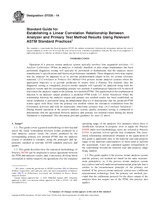
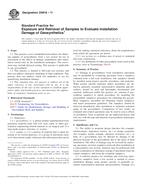 ASTM D5818-11
ASTM D5818-11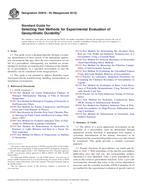 ASTM D5819-05(2012)..
ASTM D5819-05(2012)..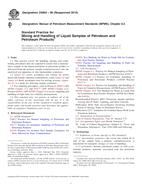 ASTM D5854-96(2010)..
ASTM D5854-96(2010)..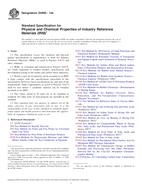 ASTM D5900-14a
ASTM D5900-14a ASTM D5966-13
ASTM D5966-13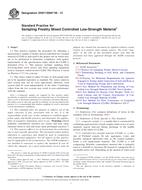 ASTM D5971/D5971M-13..
ASTM D5971/D5971M-13..
 Cookies
Cookies
